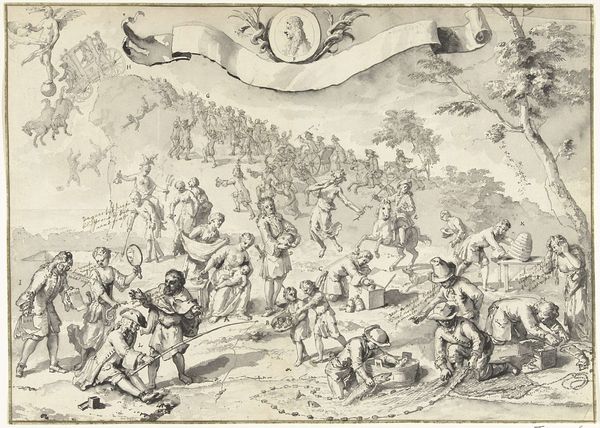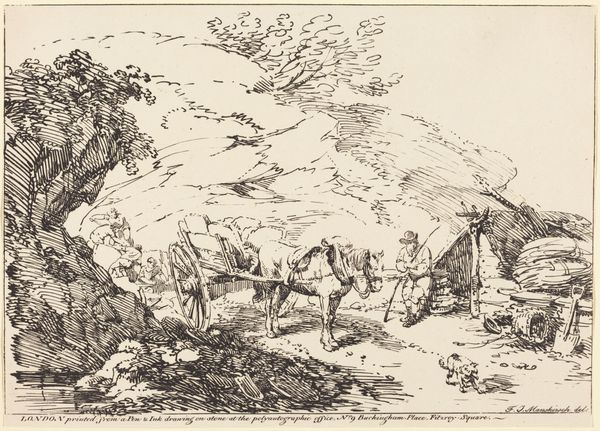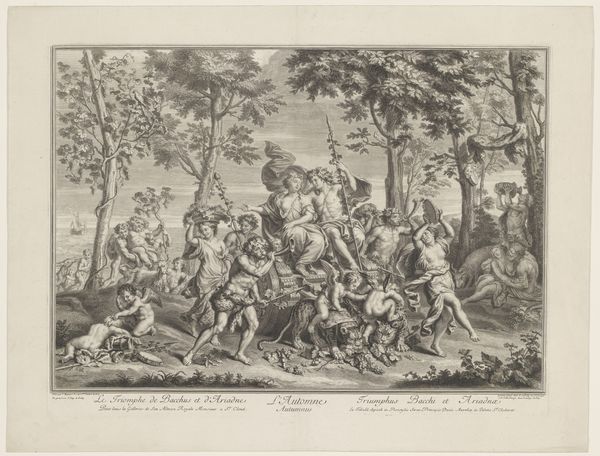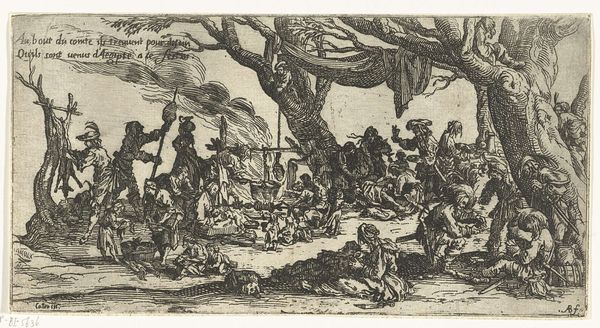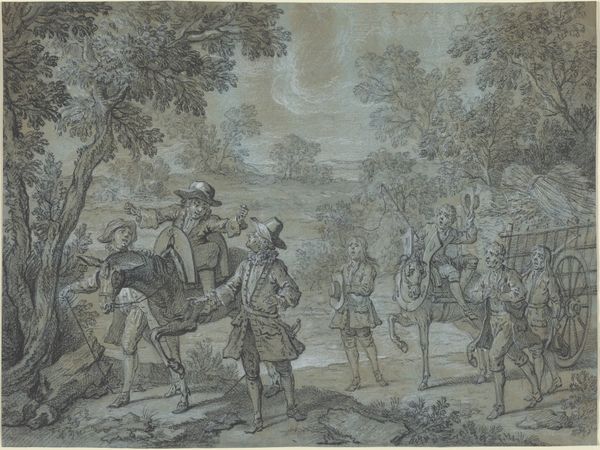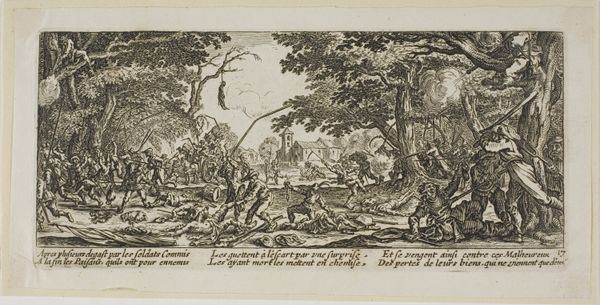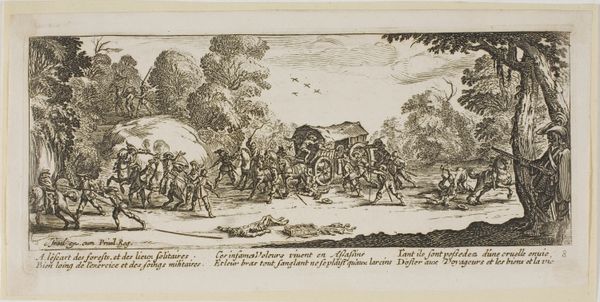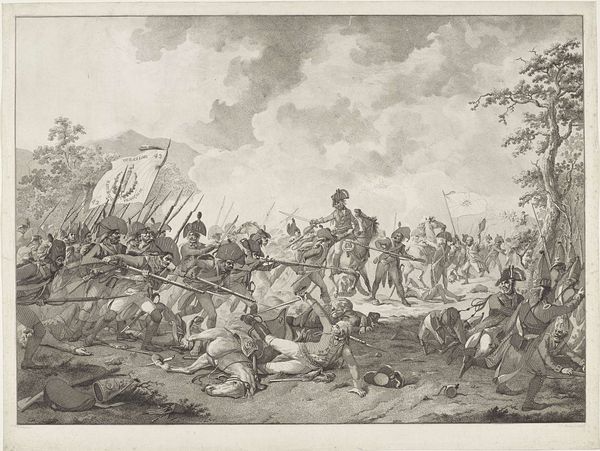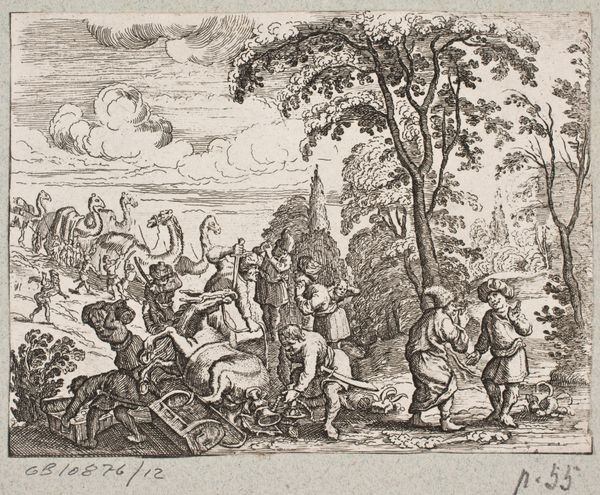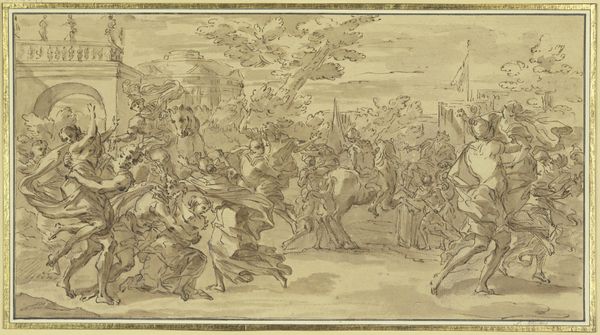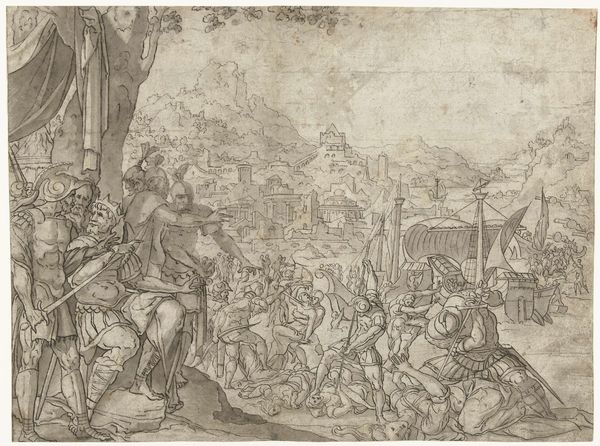
drawing, intaglio, pen, engraving
#
drawing
#
narrative-art
#
baroque
#
pen drawing
#
intaglio
#
landscape
#
figuration
#
form
#
pen
#
history-painting
#
engraving
Dimensions: height 150 mm, width 232 mm
Copyright: Rijks Museum: Open Domain
Editor: Here we have Jan van Ossenbeeck's "Veldslag," believed to be made between 1647 and 1674, rendered using pen and engraving techniques. The density of the marks to create this battle scene is striking. What can you tell us about the artist's choice of materials and technique here? Curator: Well, considering this piece through a materialist lens, it’s crucial to acknowledge the labor involved in the printmaking process. The intaglio technique—etching or engraving—necessitates a skilled artisan who painstakingly carves lines into a metal plate. Look at how Ossenbeeck uses hatching and cross-hatching, the repetitive action itself is important, the social structures involved in artistic production influence the form of the image, don't you think? Editor: I see what you mean. It’s easy to overlook the physical effort and skill involved, especially with the detail in this battle scene. So, how does the Baroque style factor into our understanding of the means of production and how audiences might consume the final image? Curator: Baroque prints like this were not just aesthetic objects; they were commodities produced and circulated within a specific economic system. The choice of the Baroque, a style popular among the aristocracy and aspiring middle class, catered to a particular consumer base willing to invest in representations of grandeur and historical narratives. Ossenbeeck crafted "Veldslag" to appeal to patrons who would see value in displays of power and idealized depictions of conflict, and that speaks volumes about societal values at the time. How the piece's narrative affects production choices, perhaps? Editor: That makes perfect sense. Considering how labor-intensive engravings can be, it would follow that targeting a wealthier patron base would ensure artistic work was economically viable. I never considered those economic structures when thinking about prints from this era! Curator: Indeed. And by examining the networks of workshops, patronage, and distribution, we gain a deeper appreciation for the material conditions that shaped art history. Editor: Thanks, that shifted my perspective. I'll definitely remember to think about the process and materials when analyzing art going forward.
Comments
No comments
Be the first to comment and join the conversation on the ultimate creative platform.


